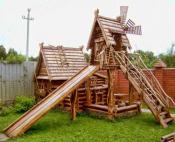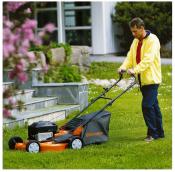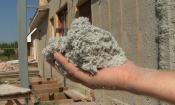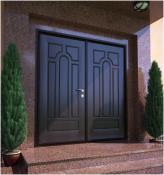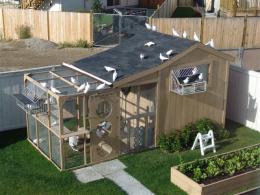Search
Login
Recommended
How to build a dovecote in the country with your own hands
Why do people raise pigeons? This question can only be asked by ignorant people who probably have never had their hobby. One that can fill with itself absolutely all the free time and bring incredible pleasure. Old pigeon houses, containing these birds for decades, cannot give a clear answer to this question either. Explaining this by the fact that breeding pigeons is a way of life, without which they simply cannot imagine their existence. They say that the habits of pigeons are extremely similar to the behavior of people and they also love, create couples and raise chicks. In order to give them the opportunity to live a calm and safe life, people build pigeons, admiring their flight among the clouds.
Content
- General rules for the construction of dovecote
- Types of dovecote
- Where to start building dovecote
- Step-by-step instructions for building a dovecote
- My new dovecote video
- How to equip the house from the inside
- Dovecote inside video
General rules for the construction of dovecote
The question as to how to build a dovecot, you should first get acquainted with all the requirements for this structure.

- The dovecote should be located at some distance from tall trees and houses. If these requirements are not taken into account, then the pigeons will simply have nowhere to fly.
- The color of the dovecote should be different from the color of all other buildings nearby. These birds perfectly distinguish all color shades and it will be easier for them to find their house from above if it differs from others in its color.
- Do not place dovecote near high-voltage lines. On departure, the risk of injury to the bird and short circuit to the line is extremely high.
- The dovecot's face should face south. Therefore, when erecting it, this nuance must be taken into account.
- Most often, dovecotes are not made too high (about 1.8-2m). Windows for the penetration of sunlight and the departure of birds should occupy at least 10% of the total wall area.
Types of dovecote
There are several types of dovecote that were built based on the capabilities of the owner of the birds.
Attic dovecoteare the most common bird keeping option. For the device of this type of dovecote, it is enough to enclose part of the attic with a wall made of netting or plywood and arrange a walk outside the dormer window and the birdhouse is ready.

Pillars. Most often, the small house on the pillar is equipped with the owner who is just thinking about how to build a dovecote with his own hands. Therefore, a small room is intended for only one pair of pigeons.

Ground. Designed to separate the first and second (attic) floors. Young animals are grown on the ground floor and all the necessary equipment is stored, and adult birds live on the upper floor.

Freedom dovecote. You can meet her in big cities where pigeons live for centuries. Most often it consists of a solid pillar dug in the ground and a hexagonal room for birds, but there are other options for buildings. Windows go out on each side of the wall of the dovecote. To protect against predators, the pillar or base is sheathed with a strip of thin iron, which makes it difficult for cats to enter the room.

Where to start building dovecote?
Before you start building your dovecote with your own hands, you need to determine a place for it and make preliminary drawings of the building. When calculating, it is necessary to consider how many birds will be kept in it at the same time. For each pair of pigeons should be about 1 m2 of the total area. The height of the room from floor to ceiling should be at least 2 m.

The material for construction can be both brick and wood. Many seasoned pigeon houses recommend building wooden pigeons, as they look much more beautiful and interesting than brick ones.
For additional ventilation, additional openings are provided in the pigeon room. One at the top of the roof, the other at the bottom. This will help to avoid air stagnation during the hot season.
Step-by-step instructions for building a dovecote
1. Any construction begins with the preparation of the foundation. For the dovecote you will need a pit of small depth (about 30 cm) which is poured with cement mortar.
2. Next, it is necessary to construct the frame of the future structure from the bars, which must be done in accordance with the previously prepared drawings.
3. Sheathe frame outside and inside with edged lumber.
4. Fill the crate on the roof (you can use a slab) and cover it with any suitable material. It can be both roofing material, and simple overlapping boards.
5. If necessary, you can attach a corral. To do this, mount the frame and fit it with a mesh with a small section. The pen should be on the side of the tap hole (inlet).
That's all. The basic questions on how to make the dovecote exhausted. All that remains is its internal arrangement.
How to equip the house from the inside?
In order for the daylight hours of pigeons to last as long as possible, it is recommended to conduct electricity in the dovecot and screw in several powerful light bulbs.
Next, you need to equip the bird housing with perches. To make a perch, you can use ordinary poles fixed 30cm from the ceiling. However, this design has many disadvantages. A person cleaning the house will inevitably suffer from this location. The uncontrolled eruption of litter and the flight of birds over the head, not the most pleasant pleasure. Therefore, it is better to equip the perches (perches) along the walls of the room.
In order to equip a wall perch, a 4 cm wide bar is best suited. It is mounted along the wall at such a distance that the bird does not touch the wall with its tail. A slanted board is pinned under the perch, designed to hold the litter. In the dovecot with your own hands, the photo of which you see, this particular method of perching is used.

Places for nesting are arranged simply. It is necessary to put together boxes of rectangular shape and place them in different places of the dovecote. In principle, a separate placement is not necessary at all, you can place the nests according to the honeycomb principle in the hive, anyway each pigeon will have its own box. The size of the nests directly depends on the breed of pigeons.

Next, you need to arrange the feeders and drinking bowls for pigeons. There should be two feeders. One for the main feed, and the second for mineral top dressing. The water in the drinker should be clean and change at least once a day.
Subject to all the above conditions, you can be sure that the pigeons will be very comfortable living in a new bird house.
